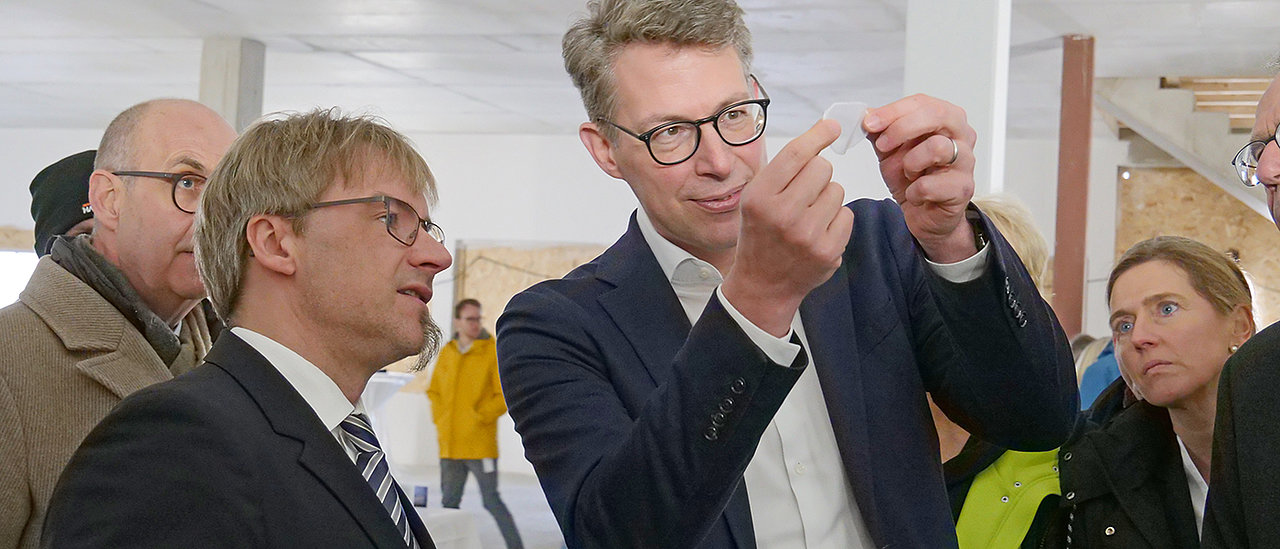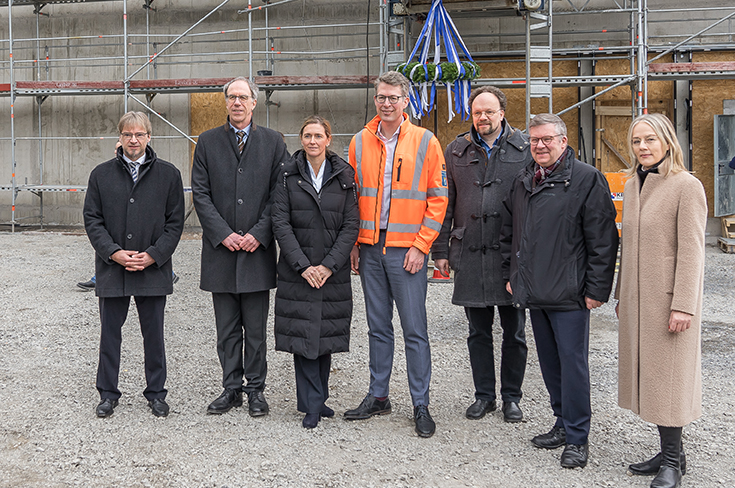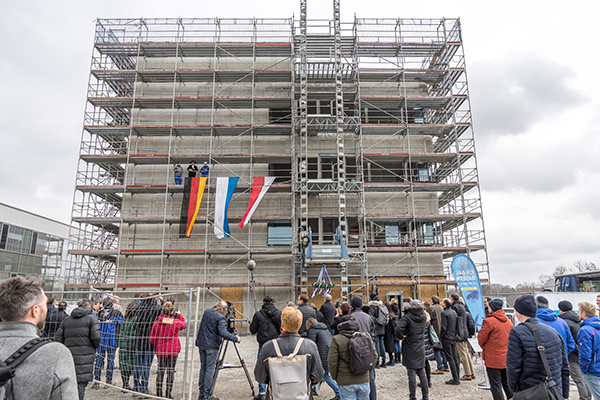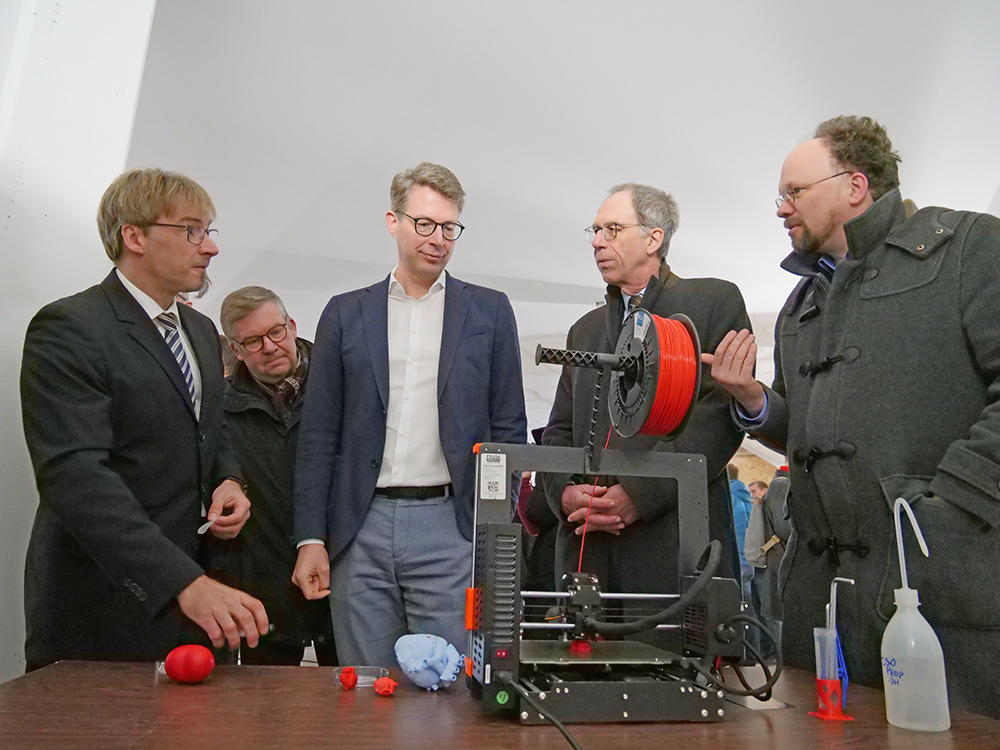
The shell of the Center of Polymers for Life at Hubland is complete. Bavaria’s Minister of Science Markus Blume came to the topping-out ceremony
On the Hubland-Süd campus of the Julius-Maximilians-Universität Würzburg (JMU), the expansion continues. On Monday, 6 March 2023, the topping-out ceremony for the new research building “Center of Polymers for Life” (CPL) was celebrated there together with Bavaria’s Minister of Science, Markus Blume. In the future, innovative research with plastics for medical applications will be the top priority in this building.
Almost 29.6 million euros have been budgeted for construction costs, initial furnishings and large-scale equipment. The federal government will pay 11.4 million euros, the rest will be paid by the Free State of Bavaria. Occupation is planned for the end of 2024.
“Würzburg is a building site for the future!” Science Minister Markus Blume said in his ceremonial address. “At the topping-out ceremony for the new research building for the Center of Polymers for Life, it is once again clear that Bavaria’s oldest university is moving full steam ahead towards excellence. The CPL raises polymer research to a new level. Chemistry, biology, physics, medicine and AI – the interface of these disciplines will see the most exciting developments in science in the coming years. For us, it is clear: Julius Maximilians University is at the forefront of this!”
Cooperation between different disciplines
In the new research building, polymer research is to be linked more closely with the still young and extremely promising field of biofabrication, thus giving new impetus to modern biomaterials research. To this end, the disciplines of chemistry, medicine, materials science, biology, computer science and engineering will work together in future to advance additive manufacturing for use in medicine and biofabrication.
One goal is the automated and standardised production of functional tissue models using additive manufacturing processes, the 3D printing of polymer melts or cross-linkable polymer solutions. Such tissue models matured in the laboratory can be used, for example, as alternatives to animal testing in pharmaceutical and cancer research. In addition, they can be used in regenerative therapies, for example as implants customised for the respective patient in the reconstruction of destroyed tissue such as cartilage or bone.
The basis for the production of such tissue models is not only the synthesis and characterisation of specialised polymers, but also their processing into cell carriers and highly innovative drug release systems, with which the growth of the newly formed tissues can be specifically influenced. In addition, such drug packaging can even be used as novel therapeutic measures in nanomedicine.
The new building will house a large part of the university’s newly founded Institute for Functional Materials and Biofabrication (IFB). The first managing director of this interfaculty institute of chemistry and medicine is polymer chemist Professor Jürgen Groll.








